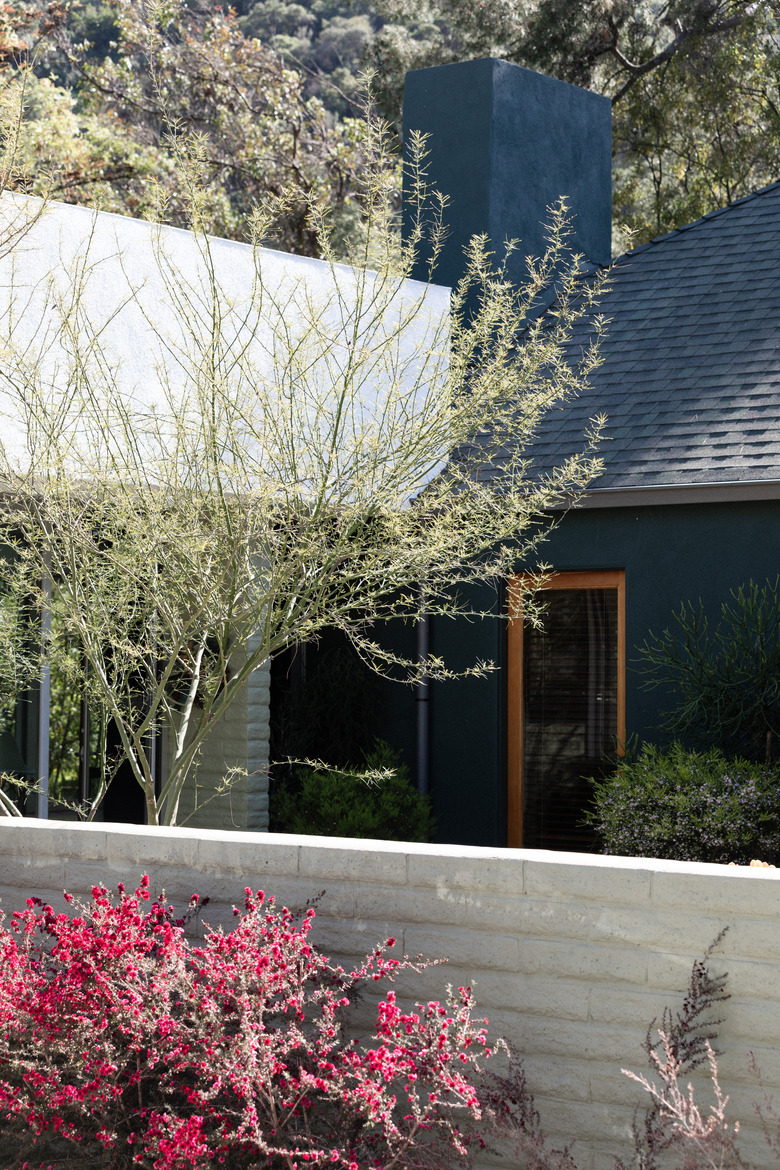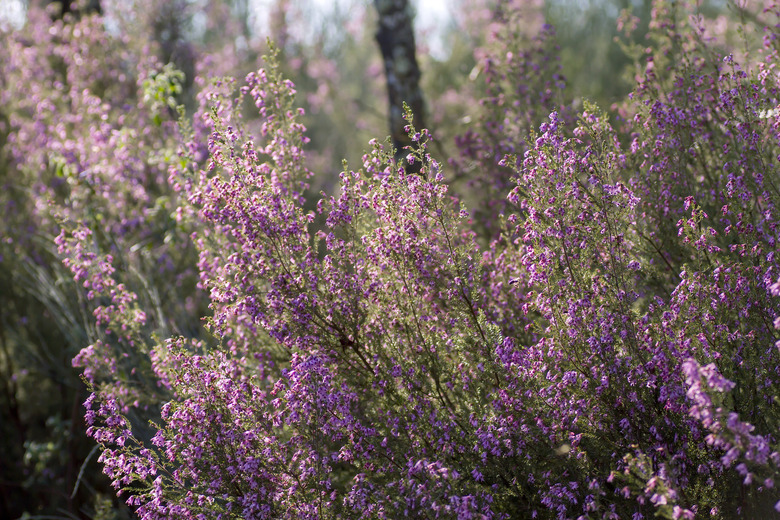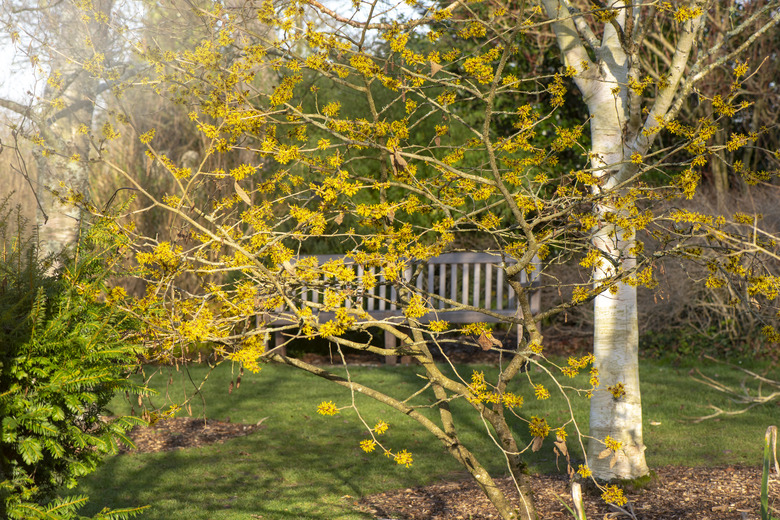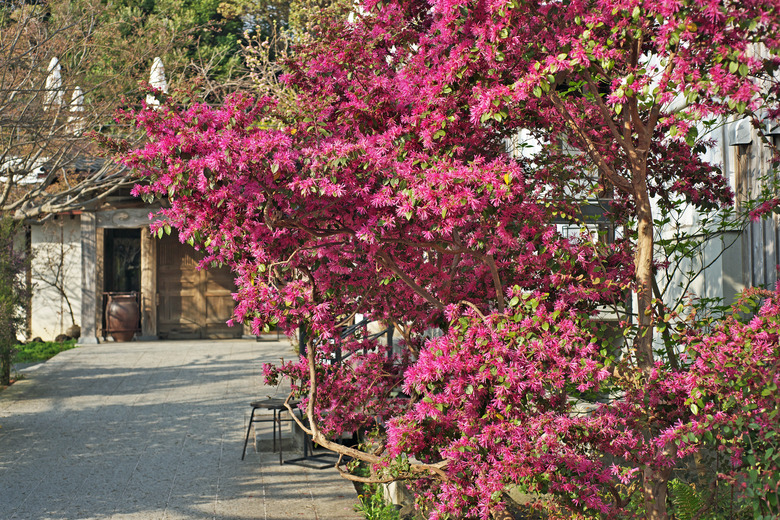Great Winter Flowering Shrubs For Most Planting Zones
We may receive a commission on purchases made from links.
When adding winter interest to your garden, don't think that pine trees and cliche evergreens are your only options. There are quite a few winter shrubs that can give you surprisingly bright bursts of color even during the gloomiest winter days. As always, the key to great gardening is understanding your local climate and selecting plants that will thrive there. This approach is much easier than randomly picking plants you like and trying to coax them along where they just aren't comfortable in the conditions of your particular yard.
Winter Shrubs and Flowers
Winter Shrubs and Flowers
Can you really have winter flowers where you live? The answer is that it depends. If you live in United States Department of Agriculture (USDA) plant hardiness zone 6 or higher, you'll easily find shrubs that will genuinely flower during the winter months.
In cooler climates, actual flower blossoms will prove harder to come by unless your particular microclimate allows it. However, this doesn't mean that your garden will be lacking in winter interest. Many winter shrubs that grow in colder climates produce colorful berries during the winter months. Others change their stem colors, creating bright spots in your garden through means other than flowers.
Colorful Camellia Bushes
Colorful Camellia Bushes
Thanks to advances in breeding, some cultivars of the once-dainty camellia (Camellia japonica spp.) can now withstand temperatures as low as -10 degrees Fahrenheit, according to Gardenia. Reaching heights of up to 20 feet and spreading up to 10 feet, these evergreens feature attractive winter blooms in shades of white, pink, red and lavender.
Some camellias bloom very late in the spring, while others do so early in the fall. If you choose a few plants from each bloom period, you can have flowers in your garden from October through May. Camellias are perennials in USDA plant hardiness zones 6 through 9, depending on species and cultivar, thriving in partial sun or shade. Sun-dappled shade is their favorite growing environment.
Versatile camellias will grow in hedges, along borders or in containers. They make for fragrant and beautiful cut-flower arrangements and require very little care. They're also not particular about soil, doing as well in clay soils as they do in sandy and loamy earth. They do need frequent irrigation, however, and even established plants show little to no drought resistance.
Camellias need only scant fertilization and do best when provided with a balanced fertilizer for acid-loving plants once a year after blooming, if indicated by soil-test recommendations. If desired, you can prune spring bloomers immediately after the flowers fade and fall bloomers early in the spring before the flowers set.
Easy-Care Winter Heath
Easy-Care Winter Heath
Gardeners in USDA plant hardiness zones 6 through 8 can enjoy the flowers of winter heath (Erica carnea) each year. Some cultivars, such as 'Springwood Pink' are hardy to zone 5. Available with red, pink or purple flowers, winter heath blooms in October or November and holds its colorful blooms until May. When the flowers fade, beautiful foliage remains in rich hues of copper, bronze and gold for an interesting contrast against summer greens.
Heaths tend to have shallow roots and will not tolerate wet feet under any circumstances. Make sure you plant your heath in very well-drained soil where it has room to grow 1 foot in height and can spread about 3 feet.
Heaths prefer full sun, and although they will grow in shade, they may not bloom satisfactorily without several hours of direct sunlight every day. Most winter heaths require little to no pruning, but you can prune immediately after the flowers fade if you feel the need. Heaths also benefit from a light fertilizer for acid-loving plants in the spring. Use a granular fertilizer and keep it well away from the plant itself, applying it only to the soil beneath the plant's dripline.
Witch Hazel Shrubs
Witch Hazel Shrubs
Grown as a small tree or large shrub, the native witch hazel (Hamamelis virginiana, zones 3-9) needs 30 feet of head room and 25 feet in which to spread out. If you can give it the space it needs, witch hazel will reward you with fragrant yellow flowers from October through December.
The deciduous leaves of the witch hazel plant are a deep green in the summer followed by brilliant shades of yellow and orange in the fall. Witch hazel will tolerate a wide array of soil conditions and grows in full sun to partial shade. Witch hazel is native to North America and is fully adapted to the growing conditions there. Besides lots of water when first planted, it usually requires no help from humans once established.
Bright Winter Jasmine
Bright Winter Jasmine
Because it is deciduous and loses its leaves in the fall, all of winter jasmine's (Jasminum nudiflorum) winter interest comes from its lemony yellow flowers and bright-green stems. Flowers appear in January and throughout winter in jasmine's growing region of hardiness zones 6 through 10.
Reaching a height of 4 feet and a spread of 7 feet, winter jasmine works well as a ground cover. It also looks fantastic cascading over hillsides and slopes. Like most plants, winter jasmine needs regular watering during the first year to establish a strong, deep root system. After that, this easy-care plant only needs access to sun and once-weekly watering during dry spells.
Cheery Winterberry Holly
Cheery Winterberry Holly
Gardeners looking for winter interest often turn to holly trees thanks to their bright-red berries. One popular holly species is the winterberry (Ilex verticillata). The winterberry doesn't produce flowers in the winter, but it does sprout clusters of bright-red berries in massive amounts. It's a perennial in USDA hardiness zones 3 to 9, making it an excellent choice for gardeners in colder climates who want winter color but can't get any winter bushes to flower.
As a North American native, winterberry grows easily throughout the U.S. without any help or special care. It will even tolerate wet soils, air pollution and erosion. Winterberry asks for very little besides an occasional trimming, but it does require a mate. Berries form only on fertilized female trees, so you or a close neighbor will need to have a male shrub in order to get berries. You'll likely need only one male since each male can pollinate six to 10 female trees.
Soft and Airy Fringe Flowers
Soft and Airy Fringe Flowers
Grown in USDA hardiness zones 7 through 9, the fringe flower (Loropetalum chinense) has both attractive foliage and beautiful blooms. Depending on cultivar, the foliage on some plants starts as a deep-burgundy color in the spring but turns an attractive bronze-green as it ages; some cultivars retain the purplish-burgundy color year-round. The blossoms of the fringe flower are pink or white, depending on cultivar, and do look like fringe, creating a soft look when the plant is in bloom.
Blooms on the fringe flower are heaviest in the spring, but the plant blooms periodically all year long, often producing flowers in the winter. This shrub is evergreen, so it will provide winter garden color even if your plant gets stubborn about winter blooms.
Fringe flowers work well as borders, foundation plantings or group plantings. They will also grow in containers. Plant your shrub where it will get full to partial sun and water it deeply and often during its first year. Encourage blossoms by feeding your fringe flowers an acidic fertilizer after each bloom, if the need is indicated by soil-test recommendations, and make sure you mulch deeply around the plant to keep its roots cool.
Lovely and Fragrant Wintersweet
Lovely and Fragrant Wintersweet
During the summer months, wintersweet (Chimonanthus praecox) is a rather nondescript plant with bland, green leaves. In the winter, however, wintersweet comes alive and puts on quite a show. A perennial in USDA hardiness zones 7 through 9, winterberry forms cheery yellow flowers in January and February. These star-shaped flowers provide plenty of winter interest and produce a heavenly scent.
Wintersweet reaches both heights and widths of about 10 to 15 feet and prefers full sun or partial shade. This shrub requires well-drained soil but is otherwise adaptable to many soil conditions. After your wintersweet blooms, hard prune old branches back to the ground.
Ideally, you should try and plant your deciduous wintersweet where it will blend in or create a nice green backdrop during the summer months. Make sure the plants around it are deciduous or short, however, so they don't block your view of the plant's attractive flowers when winter comes.
Pretty in Pink — Dawn Viburnum
Pretty in Pink — Dawn Viburnum
Can't decide if you want flowers or berries? Get both with an Dawn (Viburnum x bodnantense 'Dawn') shrub. This viburnum is a perennial in USDA hardiness zones 5 to 8, but how it grows depends on your microclimate.
In cold winter areas, Dawn produces its pink flowers late in the winter, making it one of the first flowers to appear in your garden. If the winter stays warm, the plant will debut its flowers in the fall and hold them all winter until early spring. As its flowers fade, viburnum produces red berries that darken over time, appearing almost black by fall.
Dawn viburnum makes an excellent hedge and can also be planted along walkways and patios. It likes full sun or partial shade and is very low maintenance. It's picky about water, however. Keep the soil around the plant moist but never wet. Too much or too little water can cause problems. Like Goldilocks, Dawn prefers soil when it's just right.
Although Dawn viburnum blooms in winter, its delicate blossoms don't take well to hard freezes. If they occur where you live and garden, make sure you position your plant where it will have some protection during particularly cold nights.
Clematis Jingle Bells
Clematis Jingle Bells
In USDA zones 7 through 9, consider planting clematis jingle bells (Clematis cirrhosa var. purpurascens 'Jingle Bells') for winter color. This clematis produces white flowers from late fall to early spring, so it has you covered over the winter. This evergreen plant likes full sun and will tolerate just about any soil as long as it drains well.
Slugs, aphids, caterpillars and earwigs all seem to like young clematis stems. If you find uninvited guests on your plant, a simple spray of water from the garden hose will do the trick to dislodge them.
Although it is considered a shrub, note that clematis is a voracious climber. If you want it to stay in one place, you'll need to be diligent in your pruning. You can also easily train clematis onto a trellis, fence or shed. Because it's evergreen, it will look nice all year, and you need not worry about bare branches detracting from your trellis.
References
- Gardenia: Camellias
- The National Gardening Association: Winter Heaths
- Better Homes & Gardens: Flowering Shrubs by Season
- Arbor Day Foundation: Witchhazel
- Monrovia: Winter Jasmine
- O, The Oprah Magazine: 15 Stunning Flowers That Bloom in Winter
- Missouri Botanical Garden: Ilex verticillata
- Monrovia: Sizzling Pink Fringe Flower
- Balcony Garden Web: 18 Winter Flowering Shrubs That Look Good In Winter Garden
- Portland Nursery: Chimonanthus: Wintersweet
- Missouri Botanical Garden: Viburnum × bodnantense 'Dawn'
- Royal Horticiltural Society: Clematis cirrhosa 'Jingle Bells'



